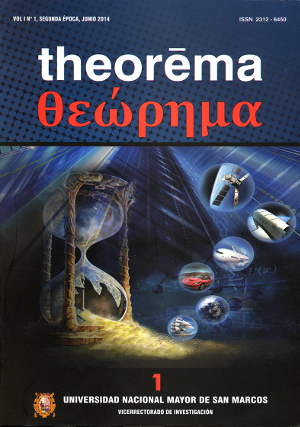Effect of sodium hypochlorite and sodium sulfide in the treatment of metallurgical cyanide effluent
Keywords:
effluent, cyanide, sodium hypochlorite, sodium sulfide, methodologyAbstract
The cyanide is applied in the treatment of gold ores for gold in free solution sterile material product of this treatment is an effluent that must be treated prior to discharge to the sea or rivers. This research aims to develop a methodology for treating the effluent with high free cyanide. The population studied was the effluent from gold cyanidation The results before treatment was 4917 ppm cyanide, is also able to determine the optimum concentration of sodium hypochlorite was 30 to 60 g/l and sodium sulfide was 10 to 16 g/l in a time of 4 to 7 hours after treatment the quantity of cyanide in the effluent decreased from 4917 ppm to the range of 0,0611 to 0,1645 ppm . We have characterized the effluent to design treatment. The conclusion was that the treatment of the effluent cyanide was reduced to smaller quantities of 1 ppm which is within the maximum allowable discharge limits.Downloads
Published
Issue
Section
License
Copyright (c) 2016 Julia Marilú Calderón De Alvarado

This work is licensed under a Creative Commons Attribution-NonCommercial-ShareAlike 4.0 International License.

Theorema segunda época by Vicerrectorado de Investigación y Posgrado is licensed under a Creative Commons Reconocimiento-NoComercial-CompartirIgual 4.0 Internacional License.
Creado a partir de la obra en http://revistasinvestigacion.unmsm.edu.pe/index.php/Theo/index.
AUTHORS RETAIN THEIR RIGHTS:
a. Authors retain their trade mark rights and patent, and also on any process or procedure described in the article.
b. Authors retain their right to share, copy, distribute, perform and publicly communicate their article (eg, to place their article in an institutional repository or publish it in a book), with an acknowledgment of its initial publication in the Theorema segunda época.
c. Authors retain theirs right to make a subsequent publication of their work, to use the article or any part thereof (eg a compilation of his papers, lecture notes, thesis, or a book), always indicating the source of publication (the originator of the work, journal, volume, number and date).



